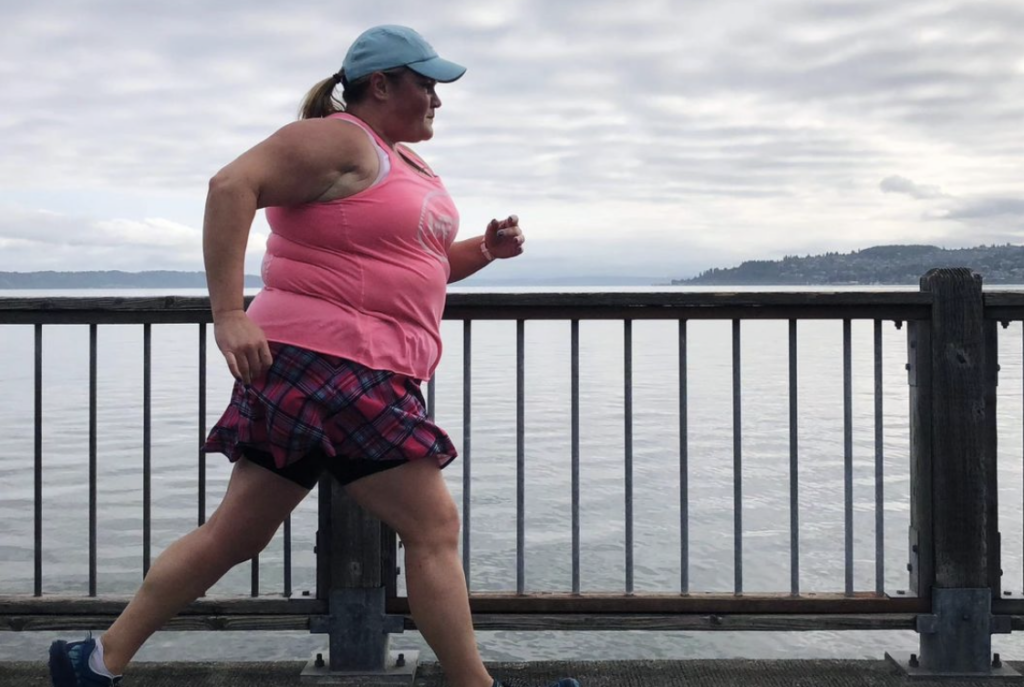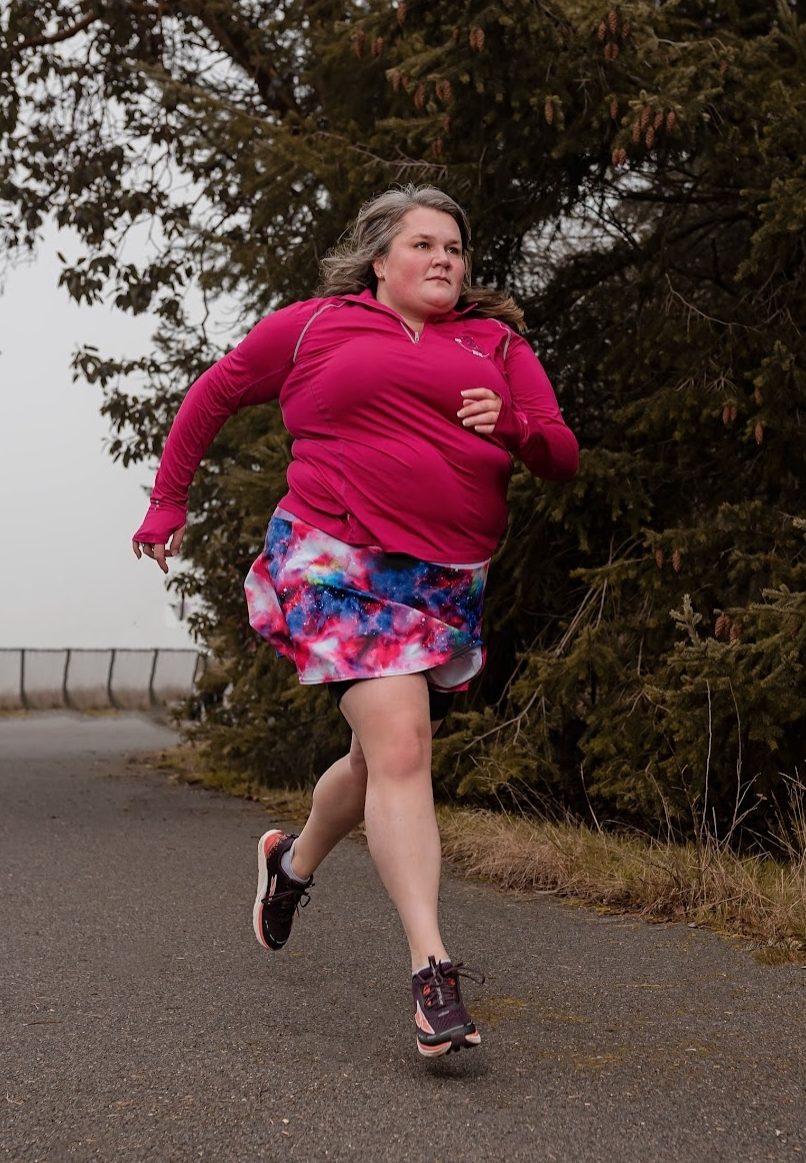Embracing Body Neutrality: How I Got Here

Learning to be who I am has taken time, as it does with a lot of people. For me, I was dealing with my body and being a larger person. Growing up we didn’t discuss embracing body neutrality. The media told us then, as it does now, what a healthy body looks like. I wasn’t that look. Over time, with more voices and more people willing to discuss their bodies we have seen a shift in the discussion. Embracing body neutrality has become a topic that we can openly discuss. We haven’t reached max capacity, but we’ve started. I wanted to share my story of what this means and how it started. I must warn you that I will take you through the good, the bad and the ugly of disordered eating for weight loss but I hope you’ll read to the end.
What is body neutrality? Through my work with Intuitive Eating (IE) and Health at Every Size, I have come to believe that body neutrality is the umbrella under which my philosophy falls, not body positivity. Body positivity focuses on loving your body no matter what it looks like. Body neutrality focuses on what your body can do and how you feel within it. Valuing bodies for the way they look, even if you’re accepting your own body as it is and considering it beautiful, still indicates that worth is determined by appearance. Neutrality removes appearance from the equation.
A Journey Unveiled
I was 10 years old when my doctor first told my mom that my BMI was high, and she started me on my first diet.
Early Years: The Diet Roller Coaster Begins
First it was cabbage soup, then Weight Watchers, then Slim Fast shakes. My mom had me enrolled in the YMCA, so I was constantly active – gymnastics, swimming, soccer, softball. I was never particularly good at team sports, and I was not a competitive kid, so I didn’t like any of those activities much. Dancing, ballet specifically, was an activity that I loved doing. I was enrolled in ballet for 8 years – until my dance teacher told me I couldn’t go en pointe because of my body type. I quit.
As I was growing, my parents were constantly monitoring my weight and my eating habits. Anything that was high-calorie or sweet was kept out of the house. I grew up on skim milk, margarine, fat-free yogurt, ice milk (not ice cream, ice milk – fewer calories). My mom was in charge of buying groceries, and provided what she thought was best for her kids, including, for me, only low-calorie, low-fat, and sugar-free foods and meals. We ate balanced meals as a family, every night at 5:30 when my dad walked in the door from work – when he wasn’t deployed somewhere else.
When he retired from the military, however, and was home more often, we started having more of the sweet stuff in the house. He had a sweet tooth – I got mine from him. After years of not having access to anything sweet, I would occasionally sneak something from his stash. In response to this, my dad bought a trunk with a padlock, and locked everything that I might want to eat into it. It sat in front of our kitchen table for years.
Family Influence: Locked Trunks and Sugar Mixtures
I distinctly remember coming home from school, searching for something to snack on. When I couldn’t find something sweet, I would angrily scowl at the locked trunk by the table, and I would then search our baking cupboard. It was then that I started mixing sugar with water and drinking it, or eating straight sugar. Not long after that, all the baking supplies ended up in the trunk, too.
I lost count of how many times I’ve embarked on a “weight loss journey” throughout my lifetime. (This is where I roll my eyes at the healthcare providers who ask, “Have you ever considered losing weight?”) My senior year of high school, I lost 40 pounds, mainly by taking three PE classes and eating nothing but dinner. I was firmly in a binge-restrict ivecycle, and because I didn’t have free access to foods I considered “forbidden,” whenever I did have access to them, I would eat them without thinking and without stopping.
There was one weight loss attempt that was particularly “successful,” wherein I was restricting myself to only 1500 calories a day (for reference, my basal metabolic rate at the time required 2100 just to exist). I had just started running, and when I wasn’t running, I was exercising for hours on the elliptical. I lost 80 pounds over nine months. People told me I looked like I lost a whole person. I still weighed over 200 pounds and was still plus-sized. I also hit a plateau and started having intense bouts of anger and depression.
ADVERTISEMENT

Discovering Running: A Turning Point in the Journey
One of the best things I did for myself was start running, however. Even though it still took me another decade to find peace with what I put into my body, being able to do so in service of an activity I love is probably what kept me from developing a full-blown eating disorder.
I stopped restricting my food, I kept running, and I slowly learned how to fuel my body so running felt good. My therapist at the time recommended the book Anti Diet by Christy Harrison. Once I finished Anti Diet, I read Intuitive Eating, and started exploring IE resources and the exercises that allow you to find food freedom and body peace.
Breaking Free: Escaping the Binge-Restrict Cycle
I am no longer stuck in the binge-restrict cycle. I can buy whatever I want at the store, and often I will forget it’s in the house – and every time that happens I marvel at my progress. My body has been at the same weight for over a year now – I avoid weighing myself except on the rare occasion that I find myself having a scientific curiosity about how my changing movement practice may have affected my body. Spoiler – it hasn’t. My body size hasn’t changed since I stopped attempting intentional weight loss, even with recovering from injury and returning to a consistent running practice. I refuse to be weighed at the doctor’s office, unless my treatment plan requires it (which it rarely does). This has resulted in positive health outcomes and very little discussion of my weight being the cause of any of any health concerns.
A downside of intuitive eating is recognizing how insidious diet culture is. There was a short period of time when IE became a trend – but then Ozempic, Wegovy, and Mounjaro entered the chat, and intentional weight loss assisted by medication is now trending. I’m seeing signs that the inclusivity that IE began to afford people in larger bodies, is no longer trending.
Advice for Athletes: Healing Your Relationship with Food and Body
If there’s any advice I can offer others, especially those of us in larger bodies, it’s to heal your own relationship with food and your body. Do this before paying any attention to the swirl of information around us. The diet industry is a billion-dollar industry, and its influence is widespread. Our society’s anti-fat bias leads us all to believe that there is something wrong with our bodies. They lead us to believe the diet industry (as well as the medical establishment that produces weight-loss drugs) is the white knight who will ride in to save us.
We can save ourselves – if we even need saving. Moving intentionally and joyfully is within our power. Fueling our bodies can be done intuitively. We can manage our health in partnership with our healthcare providers. Doing this takes practice such as asking questions that advocate for ourselves. Asking questions such as, “What is the treatment for someone in a body smaller than mine? Let’s start there.” We can separate ourselves from the rhetoric that we must all be searching for a smaller or more attractive body.
None of this is easy. There’s a reason I was in my 40s when I even attempted it. I also have bad body days. Like you, I don’t always feel good in my body or don’t like the way it looks.
A Beautiful Work in Progress: Embracing Body Neutrality
We are all a beautiful work in progress. We take two steps forward and two steps back. But I can say that giving up the expectation that I’m constantly dieting to reduce my body size has done nothing but positive things for my mental and physical health. I encourage all runners to explore what it means to give up diet culture. Recover your own sense of fueling for your movement, and discover the practice of gentle nutrition and joyful movement.
ADVERTISEMENT

Marci Braithwaite is an RRCA- and USATF-certified running coach who focuses on beginner runners and athletes in larger bodies using Size-Inclusive and HAES-aligned principles. She has completed over 100 races of various distances in her 12 years of running, including a marathon, and she has her sights set on completing a 50k in 2023





